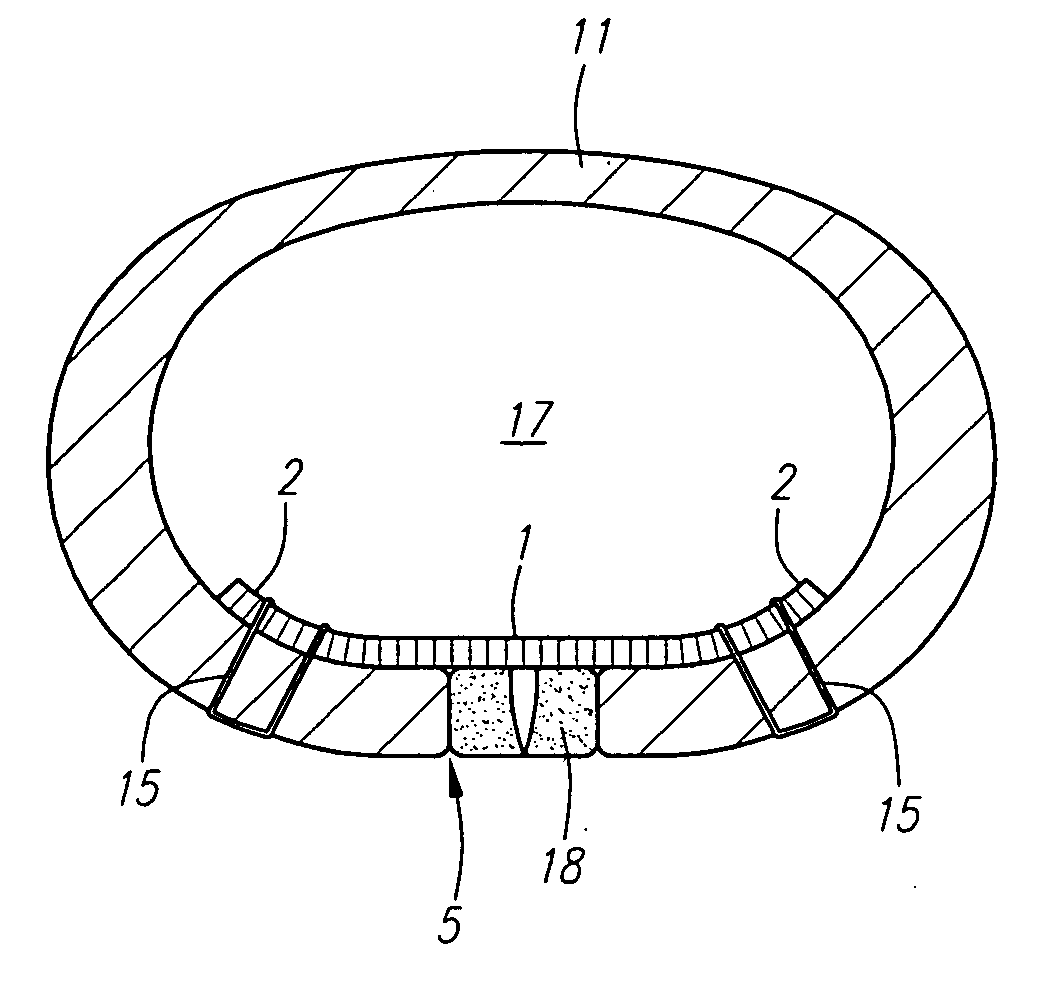Methods and apparatus for reconstructing the anulus fibrosus
- Summary
- Abstract
- Description
- Claims
- Application Information
AI Technical Summary
Benefits of technology
Problems solved by technology
Method used
Image
Examples
Embodiment Construction
[0100]FIG. 25A is a posterior view of a sagittal cross-section through a portion of the lumbar spine. The drawing shows bisected pedicles 202, 204, 206 of three lumbar vertebrae. Posterior longitudinal ligament (PLL) 210 courses over the middle of the vertebrae and fans out over the posterior portions 112, 114, 116 of the intervertebral discs. FIG. 25B is a sagittal cross section of two lumbar vertebrae and their associated ligaments. Posterior longitudinal ligament (PLL) 210 can be seen covering the posterior side of the intervertebral disc. It lies between the discs and the thecal sac and exiting nerves. The thecal sac also contains spinal nerves. Posterior longitudinal ligament (PLL) 210 is loosely attached to the anulus fibrosus of the discs and likely contributes cells that grow into devices placed adjacent to itself. Posterior longitudinal ligament (PLL) 210 also prevents adhesions between the thecal sac / nerves and any device that is placed between posterior longitudi...
PUM
 Login to View More
Login to View More Abstract
Description
Claims
Application Information
 Login to View More
Login to View More - R&D
- Intellectual Property
- Life Sciences
- Materials
- Tech Scout
- Unparalleled Data Quality
- Higher Quality Content
- 60% Fewer Hallucinations
Browse by: Latest US Patents, China's latest patents, Technical Efficacy Thesaurus, Application Domain, Technology Topic, Popular Technical Reports.
© 2025 PatSnap. All rights reserved.Legal|Privacy policy|Modern Slavery Act Transparency Statement|Sitemap|About US| Contact US: help@patsnap.com



